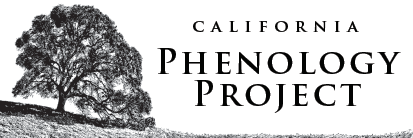Phenology gardens are planned landscapes established for the purpose of monitoring plant and animal phenology. They can be as simple as a few plants installed outside of a building, to an expansive landscape of native or cloned genotypes that is outfitted with automated environmental sensors and educational signs.
Phenology gardens have been planted and monitored by scientists since the 1940’s to study agricultural seasons and climatic changes across entire continents. More recently, phenology gardens have also become recognized as incredibly powerful educational tools.
- Phenology gardens bring nature closer to the classroom, providing an outdoor classroom that can be revisited over time (for free!), helping students and their teachers connect with the pace of nature across the seasons.
- With just a bit of planning, phenology gardens can be integrated into all aspects of curriculum goals and topics (STEM, humanities, fine arts), for all educational levels (K-12, college, adult ed), and educational settings (formal, informal).
- The planning and installation of phenology gardens can be a community-building activity, bringing together educators, families, and community members and organizations.
Put simply, phenology gardens can provide a single platform for integrative environment-based education. Download the Phenology Gardens Guide to learn more and to begin planning your own phenology garden! Then contact us about your progress and to align your phenology garden with the California Phenology Project and the USA National Phenology Network.
Phenology Gardens Guide
A practical guide for integrating phenology into garden planning and education (4.1MB)
CPP scientists and educators have helped to lead the charge for the development of phenology gardens as scientific and educational tools. This easy-to-read 36-page guide is the result of several years of working to develop a network of native plant phenology gardens in California. With this guide you'll access a wealth of information about planning, installing, and using phenology gardens. It includes planning tables, details on aligning phenology gardens with the USA National Phenology Network, and several case studies of successful phenology gardens.
Be sure to check out our hands-on interactive activities to conduct in your phenology garden!





